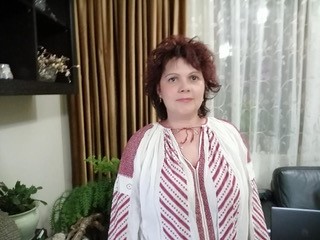Description
The
Romanian “ia” represents our cultural identity, part of our DNA inscribed with
so much mastery, elegance and uniqueness in the code of values of the Romanian
people. It is the main piece in the composition of the traditional Romanian
costume. Around it, the other elements of the folk costume are outlined, in a
unique chromatic and ornamental harmony.
Cut in the
shape of a cross, from a single piece of cloth, with an opening at the top, it
is in fact a holiday shirt made of white cloth, cotton, linen or borangic and
is adorned with various embroideries. The technique of decorating it has been passed
down from generation to generation. The motifs are stylized, geometric
or inspired by nature.
Intention
The
patterns of Romanian embroidery differ from one area to another. Geometric
motifs, inspired by nature or impressive stylized motifs, complex floral motifs
or religious symbols that unite the horizontal with the vertical, us with the
Divinity.
Every
family is proud of such a piece of clothing, preserved with holiness, in a
place of honor and passed down from generation to generation.
Worn by my
great-grandmother, then by my grandmother and now by me, this 170-year-old “ia”
from Gorj was made by the masterful hands of the nuns from the Tismana
monastery.
Descriere
Ia românească reprezintă identitatea noastră culturală, parte din AND-ul nostrum înscris cu atâta măiestrie, eleganţă şi unicitate în codul valorilor poporului român. Ea reprezintă principala piesă din componenţa costumului traditional romănesc. În jurul ei, se conturează şi celelalte elemente ale costumulului popular,într-o armonie cromatică şi ornamentală unică.
Croită în formă de cruce, dintr-o singură bucată de pânză, cu o deschizătură în partea de sus, ia este de fapt o cămaşă de sărbătoare din pânză albă, bumbac, in sau borangic şi este împodobită cu diverse broderii. Tehnica decorării ei s-a transmis din generaţie în generaţie. Motivele sunt stilizate, geometrice sau inspirate din natură.
Intenție
Modelele broderiiloriei româneşti diferă de la o zonă la alta. Motive geometrice, inspirate din natură sau impresionante motive stilizate, motive florale complexe sau simboluri religioase care unesc orizontalul cu verticalul, pe noi cu Divinitatea.
Fiecare familie se mândreşte cu o astfel de piesă vestimentară, păstrată cu sfinţenie, la loc de cinste şi transmisă din generaţie în generaţie.
Purtată de străbunica mea, mai apoi de bunica şi în prezent de mine, ia gorjenească veche de peste 170 de ani, a fost făcută de mâinile măiestre ale măicuţelor de la mânăstirea Tismana.
Beschreibung
Die rumänische „Ia“ repräsentiert unsere kulturelle Identität und ist Teil unserer DNA, die das Können, die Eleganz und die Einzigartigkeit des Wertekatalogs der rumänischen Menschen beinhaltet. Die „Ia“ ist das Kernstück in der Zusammensetzung traditioneller rumänischer Kostüme. Drumherum befinden sich die anderen Elemente der Volkstracht, die in einer einzigartigen farblichen und ornamentalen Harmonie dargestellt sind.
Aus einem einzigen Stoffteil in der Form eines Kreuzes geschnitten und mit einer Öffnung am oberen Rand, wird es als Feiertagskleidung getragen, dass aus weißem Tuch, Baumwolle, Leinen oder Seide besteht. Es ist mit verschiedenen Stickereien verzieht. Die Verzier Technik des Stoffs wurde von Generation zu Generation weitergegeben. Die Motive sind stilisiert, geometrisch oder von der Natur inspiriert.
Absicht
Die Muster, die in der rumänischen Stickerei gefunden werden, unterscheiden sich von denen anderer Regionen. Sie bestehen aus geometrischen Motiven, die von der Natur inspiriert wurden oder beinhalten beeindruckende stilisierte Motive, komplexe Blumenmotive sowie religiöse Symbole, die das Horizontale mit dem Vertikalen, uns mit der Göttlichkeit, verbinden.
Jede Familie ist stolz darauf, im Besitz solcher Kleidung zu sein, die mit Heiligkeit aufbewahrt wird und einen Ehrenplatz erhält. Sie wird von Generation zu Generation weitergegeben.
Die Ia auf dem Foto wurde von meiner Urgroßmutter getragen, dann von meiner Großmutter und jetzt von mir. Dies ist eine 170 Jahre alte „Ia“ aus Gorj, die von den gekonnten Händen der Nonnen des Tismanaklosters hergestellt wurde.


